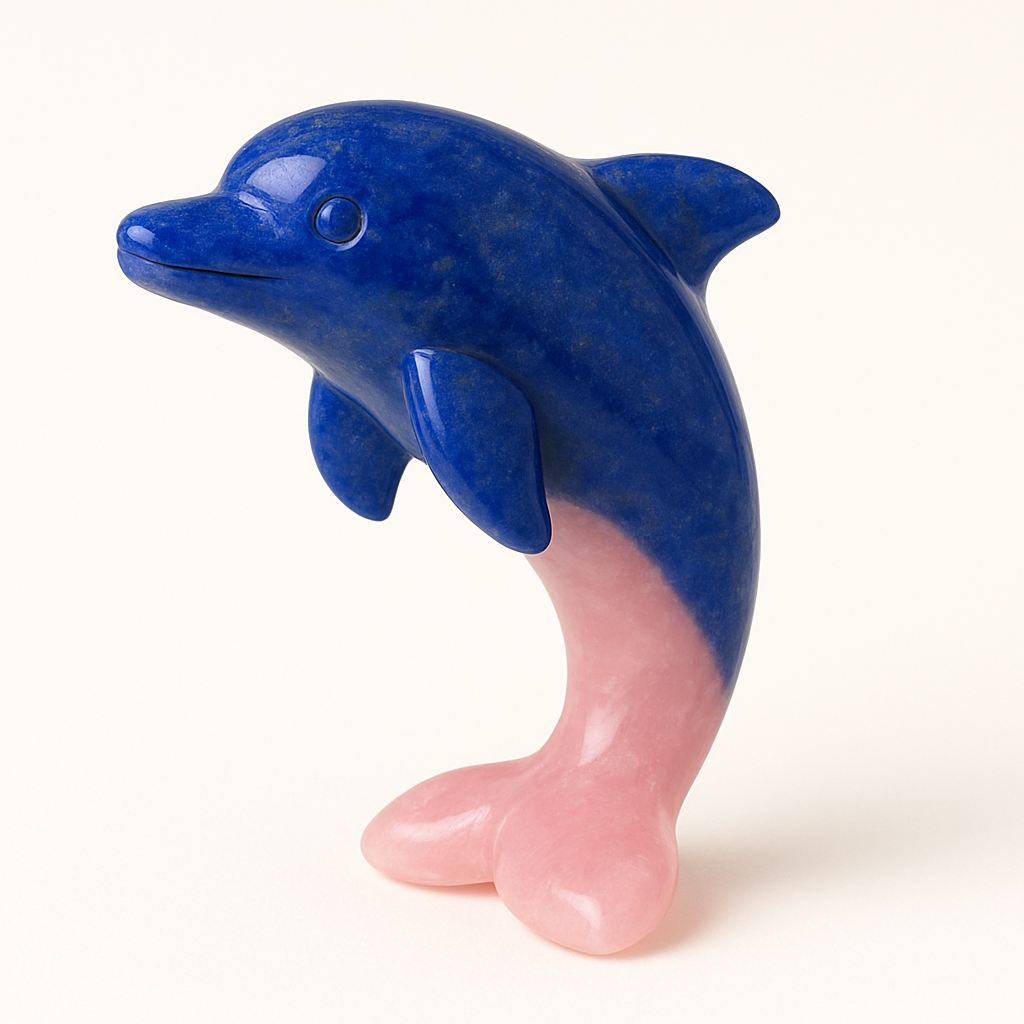
The Symbolism of Dolphins
Share
Fluid, playful, and intensely aware, the dolphin moves through water not as a drifter but as a conscious participant in the current of life. Its intelligence does not dominate—it communicates. Its joy is not superficial—it is a reflection of deep alignment with harmony, empathy, and flow. The dolphin is the emblem of emotional intelligence merged with collective attunement, of joy as service, and of the sacred use of breath, sound, and presence to unify and uplift.
To contemplate the dolphin is to encounter the archetype of unity through joy, of knowing through resonance, and of consciousness that remembers the whole while playing as a part.
The Joyful Messenger in Cultural Memory
Across oceanic and river-based cultures, the dolphin has long been a bridge between worlds—between human and sea, between seen and unseen, and between intellect and emotion.
In ancient Greece and Rome, dolphins were considered sacred messengers of the gods, associated with Apollo, Poseidon, and the divine harmony of the cosmos. They were seen as guides for the souls of the dead, as well as guardians of sailors, appearing when alignment with nature was honored.
Among many Indigenous traditions, the dolphin represents telepathic communion, emotional freedom, and the link between sound and healing. It is revered as a keeper of joy that is grounded, not frivolous, and as a communicator of truth through vibration, not conflict.
In Hindu and Vedic thought, the dolphin is associated with Ganga, the sacred river and divine mother, as well as with the auspicious return to flow—reminding the soul of its original lightness and sacred play.
In all cultures, the dolphin is never solitary in symbolism—it always points to the greater group, to coherence, and to the intelligence of cooperation through joy.
Play, Breath, and Vibrational Unity
The dolphin breathes air but lives in water—a being of two realms, embodying the balance between spirit and emotion, thought and feeling. It rises to breathe consciously, and then dives again into the sea of sensation. This rhythm becomes a metaphor for the soul’s descent and return, for incarnational cycles, and for the sacred need to pause, breathe, and remember.
Its play is not distraction—it is healing, social bonding, and energetic regulation. It teaches that joy is not escape—it is coherence in motion.
The dolphin’s use of sound—echolocation, clicks, and whistles—creates a resonant field through which it knows its world and its companions. It perceives not just through sight, but through vibration. Thus, it models a consciousness that is attuned beyond form, sensing with the field of being itself.
The dolphin teaches that true awareness is not isolated—it is shared, and that the highest intelligence sings, plays, and includes.
Resonance with the Energy Centers
The dolphin resonates primarily with the blue-ray energy center—the throat chakra, which governs communication, truth, resonance, and alignment through expression.
This blue-ray current flows through every aspect of the dolphin’s being. It lives in dialogue—with others, with its environment, and with the unseen. Its sound is not random—it is the language of relationship, of energetic transparency, and of coherence without control. The dolphin shows that to speak is to connect, and that connection is the essence of harmony.
There is also a secondary resonance with the green-ray energy center—the heart chakra, which governs compassion, unity, empathy, and unconditional love.
The dolphin’s joy, its emotional intelligence, its protective behaviors toward other species, and its commitment to group wellbeing all emerge from this open-hearted field. Its movement is not selfish—it is rooted in feeling, in the well-being of the whole, and in love expressed through play.
Together, blue and green express the dolphin’s vibration as:
loving communication,
resonant joy,
and unity through shared expression.
The One Who Sings the Group into Harmony
To walk—or swim—with the dolphin is to learn that truth does not require struggle, and that joy is not naive—it is the natural state of a being aligned with love and clarity. The dolphin invites the seeker to breathe consciously, to speak kindly, and to remember that connection is the path, not the reward.
The dolphin does not fight the current.
It rides it—with grace and sound.
It does not isolate.
It invites, includes, and harmonizes.
It teaches:
Play is sacred.
Sound is a bridge.
And joy—when offered to the group—is a form of light.